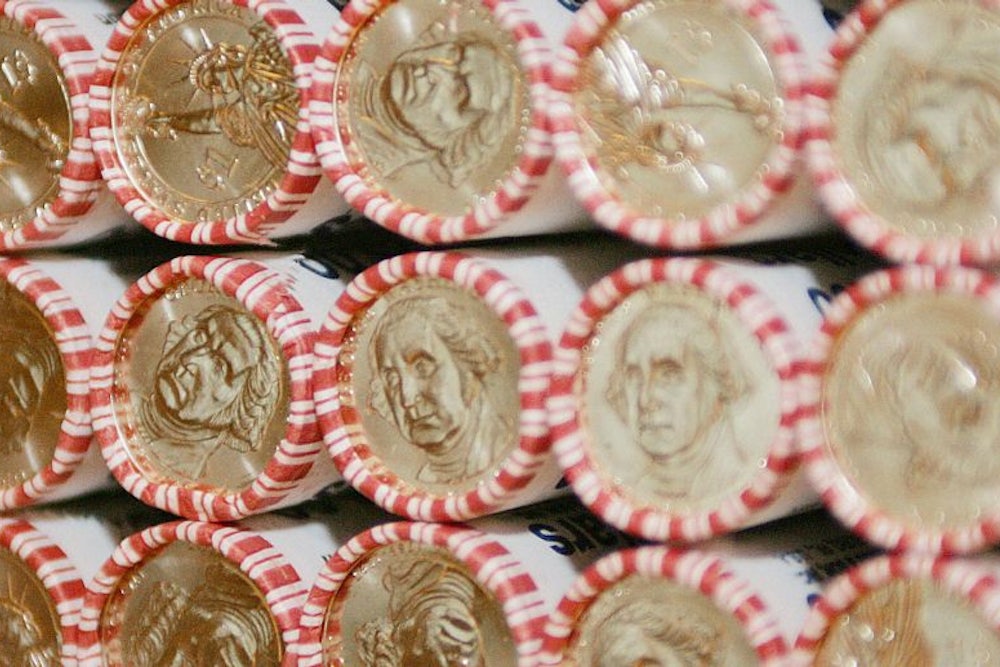The United States Mint recently unveiled the first of this year's "America the Beautiful" quarters, with White Mountain National Forest in New Hampshire featured on the back of the coin. Four additional quarters in the series will follow later this year, with five more per year at least through 2021 (and possibly through 2033).
The "America the Beautiful" series is nice, as was the state-by-state quarter series that preceded it. But these new quarter designs only affect the back of the coin. The front design—or the obverse, as it's known in the coin biz—has retained the familiar portrait of George Washington.
Washington, in fact, has been on the front of the quarter since 1932, which means there are relatively few living Americans who can recall anyone else being on the front of a 25-cent piece. The situations are similar with the nickel (which has had Thomas Jefferson on the front since 1938), dime (Franklin Roosevelt, since 1946), and penny (Abe Lincoln, since 1909!). Leaving aside the changes to the one-dollar coin, which is used by approximately no one, the last roster change to the front of an American coin came in 1964, nearly half a century ago, when John F. Kennedy supplanted Benjamin Franklin on the half-dollar. And that only happened as part of the spasm of national grief in the wake of JFK's assassination.
Things weren't always this way. During the half-century before JFK's death, our dimes, nickels, quarters, and half-dollars had three different obverse designs apiece. What's changed? In a word: politics. Coinage can only be altered by act of Congress, and coinage designs have become just another political football. Republicans have long been annoyed that two 20th-century Democratic presidents—FDR and JFK—appear on our coins. The Eisenhower dollar, introduced in 1971, was supposed to help even the scales, but it never caught on and was discontinued after only eight years, which just made things worse. GOP lawmakers would dearly love to enshrine Ronald Reagan on one of our primary coins, but Democrats will never allow that to happen. So the only people who've been acceptable to both sides over the past generation or so are nonpartisan figures like Susan B. Anthony and Sacagawea (who were both consigned to the dollar-coin ghetto).
Coin designs have even become an odd form of political pork. In 2002, Eric Cantor—now the House Majority Leader but then just a freshman back-bencher—introduced the American 5-Cent Coin Design Continuity Act, which stipulates that the nickel must always feature Jefferson on the front and Monticello on the back. Why? Because Cantor represents Virginia, where Monticello is located.
There's something sad about all this. Coin designs are a good way to document the progression of our national design sensibility—or at least they should be. And while changing the back is fine (did you notice that the penny got a new back design in 2010?), it's a shame that the fronts of our coins are stuck in the past. Too bad President Obama didn't go ahead with that trillion-dollar coin. At least he could have had some fun deciding who to put on the front of it.
